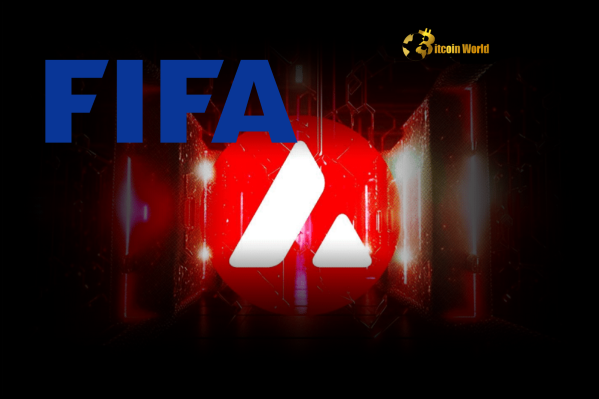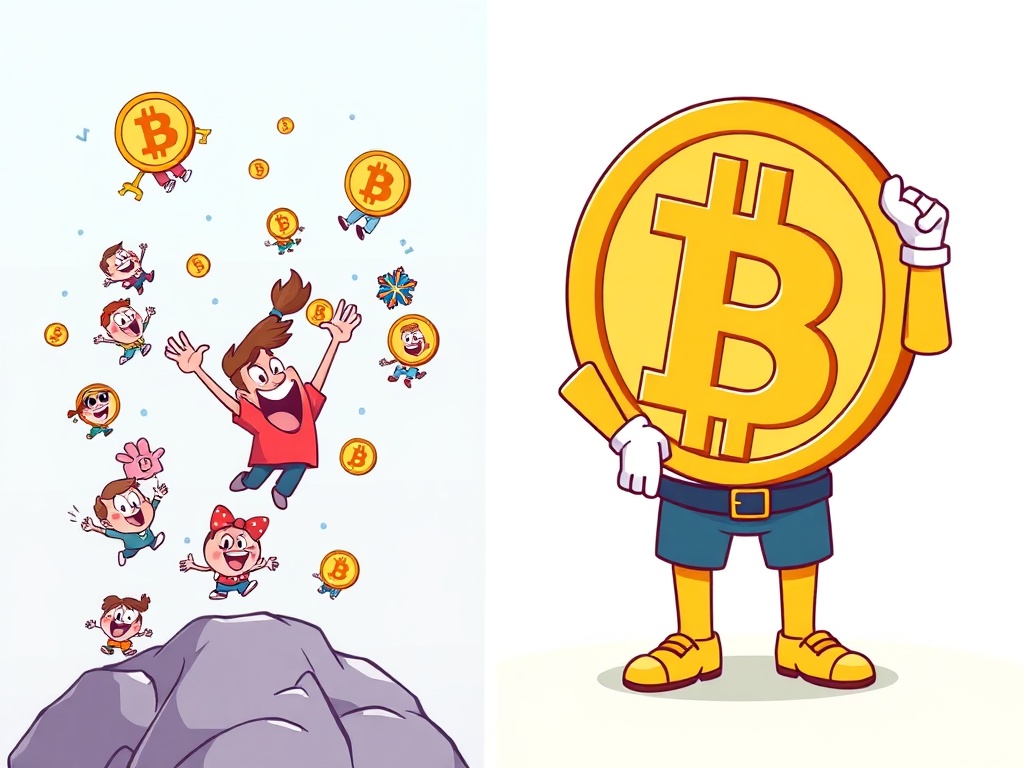BitcoinWorld

FIFA blockchain: Revolutionary Web3 Future on Avalanche Unveiled
Get ready for a major play in the world of digital collectibles and fan engagement! FIFA, the global governing body of football, is stepping further into the Web3 arena, and this time, they’re building their own playing field. According to a report from CoinDesk, FIFA is set to launch a custom layer-1 blockchain, leveraging the robust technology of the Avalanche (AVAX) network. This move signals a deeper commitment to exploring the potential of decentralized technologies beyond simple NFT drops.
What is the FIFA blockchain and why is it significant?
The news that FIFA is developing its own dedicated layer-1 blockchain is a game-changer. Unlike simply issuing assets on an existing public chain, creating a custom blockchain provides FIFA with unparalleled control, flexibility, and the ability to tailor the network specifically for its unique needs and future Web3 initiatives. This isn’t just another project; it’s about building an entire digital ecosystem around the world’s most popular sport.
The significance of the FIFA blockchain lies in several key areas:
- Dedicated Ecosystem: It allows FIFA to create a controlled environment for all its future digital assets and applications, from collectibles and fan tokens to potentially ticketing and gaming.
- Customization: A custom chain means FIFA can set its own rules, transaction fees (or lack thereof for users), consensus mechanisms (within the Avalanche framework), and privacy settings.
- Scalability: Designed for a massive global fanbase, the blockchain needs to handle high transaction volumes, especially during major events like the World Cup. A dedicated chain can be optimized for this.
- Brand Control: FIFA maintains greater control over the user experience and the underlying technology supporting its digital presence.
This move represents a significant evolution from their previous Web3 foray, which involved an NFT collection launched on the Algorand network prior to the 2022 World Cup. While that was an important first step, launching a full layer-1 blockchain indicates a long-term strategic vision for integrating Web3 into the core of FIFA’s digital strategy.
How does Avalanche crypto power this initiative?
FIFA’s choice of Avalanche (AVAX) as the underlying technology partner is crucial. Avalanche is known for its speed, scalability, and, importantly, its ability to support custom, application-specific blockchains called ‘Subnets’. This is likely the technology FIFA will utilize to build its dedicated network.
Here’s why Avalanche is a strong fit for a large-scale sports entity like FIFA:
- Subnets: Avalanche Subnets allow anyone to launch their own custom blockchain network with tailored virtual machines, execution environments, and validator sets. FIFA can create a private or consortium blockchain that meets its specific performance and compliance requirements.
- Performance: Avalanche’s architecture is designed for high throughput and low transaction finality, essential for applications requiring quick and frequent interactions, such as trading digital collectibles or interactive fan experiences.
- Scalability: Subnets operate independently, meaning the activity on FIFA’s chain won’t congest the main Avalanche network, and vice-versa. This provides inherent scalability for handling potentially millions of users and transactions.
- EVM Compatibility: Avalanche’s C-Chain is compatible with the Ethereum Virtual Machine (EVM), making it easier for developers familiar with Ethereum to build on the network and potentially connect with the broader DeFi and NFT ecosystem, although FIFA’s custom chain might have different compatibility features depending on its design.
The collaboration highlights Avalanche’s growing traction in enterprise and large-scale deployments, demonstrating the practical utility of the Avalanche crypto ecosystem beyond decentralized finance and consumer dApps.
Exploring the potential of Web3 sports with FIFA.
FIFA’s entry into building its own chain on Avalanche opens up a vast landscape of possibilities for Web3 sports engagement. This isn’t just about digital trading cards; it’s about creating immersive, interactive, and potentially ownership-driven experiences for football fans worldwide.
Potential applications and use cases could include:
- Enhanced Digital Collectibles (NFTs): Moving beyond static images to dynamic NFTs that evolve based on real-world match data or player performance.
- Fan Tokens: Creating tokens that grant holders voting rights on minor club/league decisions, access to exclusive content, or unique experiences.
- Gamification: Integrating blockchain elements into fantasy sports, prediction markets, or dedicated FIFA blockchain games.
- Ticketing: Exploring secure, verifiable digital tickets that can potentially reduce counterfeiting and enable secondary market control.
- Digital Identity and Loyalty: Creating persistent digital identities for fans across various FIFA platforms, tied to loyalty programs and rewards.
- Decentralized Governance (Future): Potentially giving token holders a say in the development of the digital ecosystem.
The success of Web3 sports relies on providing genuine value and utility to fans, not just speculative assets. FIFA’s ability to integrate these digital experiences seamlessly with real-world football events will be key.
The evolution of sports blockchain: From NFTs to custom chains.
The journey of sports blockchain adoption has been relatively rapid. It started with early experiments, primarily focusing on non-fungible tokens (NFTs) representing moments, collectibles, or artwork. Projects like NBA Top Shot demonstrated the market demand for digital sports memorabilia.
However, simply issuing NFTs on existing public blockchains has limitations for large organizations with specific requirements:
| Feature | NFTs on Public Chain | Custom Sports Blockchain (e.g., FIFA on Avalanche Subnet) |
|---|---|---|
| Control & Customization | Limited by the base chain’s rules | Full control over rules, fees, features |
| Scalability | Dependent on base chain capacity; can face congestion | Dedicated capacity, optimized for specific use cases |
| Transaction Fees | Variable, can be high (gas fees) | Can be fixed, low, or even free for users |
| Target Audience | Crypto-native users primarily | Can be designed for mainstream users with abstracted crypto complexity |
| Ecosystem Integration | Interacts with existing dApps on the chain | Can build a dedicated, integrated ecosystem around the brand |
FIFA’s decision to launch a custom chain signifies the next phase in sports blockchain evolution. It indicates that major sports entities are looking beyond initial use cases like collectibles and are exploring how blockchain can underpin a broader digital strategy, offering more integrated and controlled fan experiences. This trend could see other major leagues and organizations follow suit, opting for tailored blockchain solutions to power their digital futures.
What does this mean for the future of FIFA Web3?
The launch of a dedicated blockchain lays the foundation for a comprehensive FIFA Web3 strategy. It’s not just about launching a single product; it’s about building an infrastructure that can support a multitude of digital initiatives over the coming years. This could involve closer integration with gaming partners, new forms of fan interaction during live matches, and even exploring decentralized autonomous organization (DAO) elements for certain aspects of fan community management.
For fans, this could eventually mean:
- True digital ownership of collectibles and assets.
- New ways to engage with their favorite sport and teams.
- Potential opportunities to earn or be rewarded for their loyalty and participation.
For developers, it presents opportunities to build applications and services on top of the FIFA blockchain, provided FIFA opens up the ecosystem. For the crypto world, it’s another significant validation of blockchain technology’s potential for mainstream adoption, particularly within massive global industries like sports.
Challenges remain, of course. Educating a global, non-crypto-native fanbase about Web3 concepts, ensuring regulatory compliance across various jurisdictions, and building user-friendly interfaces will be critical to the success of FIFA Web3 initiatives. However, by committing to building its own infrastructure, FIFA is positioning itself to tackle these challenges head-on and shape the future of digital fan engagement in football.
In Conclusion:
FIFA’s decision to launch a custom layer-1 blockchain on Avalanche is a landmark moment for both the sports and blockchain industries. It moves beyond experimental NFT drops to establishing a dedicated digital foundation for future Web3 endeavors. By leveraging Avalanche’s Subnet technology, FIFA gains the control, scalability, and customization needed to build a comprehensive digital ecosystem for its global fanbase. This revolutionary step has the potential to redefine fan engagement, unlock new digital economies, and accelerate the integration of decentralized technologies into the heart of the world’s most popular sport. It signals a clear intent from one of the largest global organizations to embrace the potential of blockchain technology for the long term.
To learn more about the latest Web3 sports trends, explore our article on key developments shaping sports blockchain institutional adoption.
This post FIFA blockchain: Revolutionary Web3 Future on Avalanche Unveiled first appeared on BitcoinWorld and is written by Editorial Team





